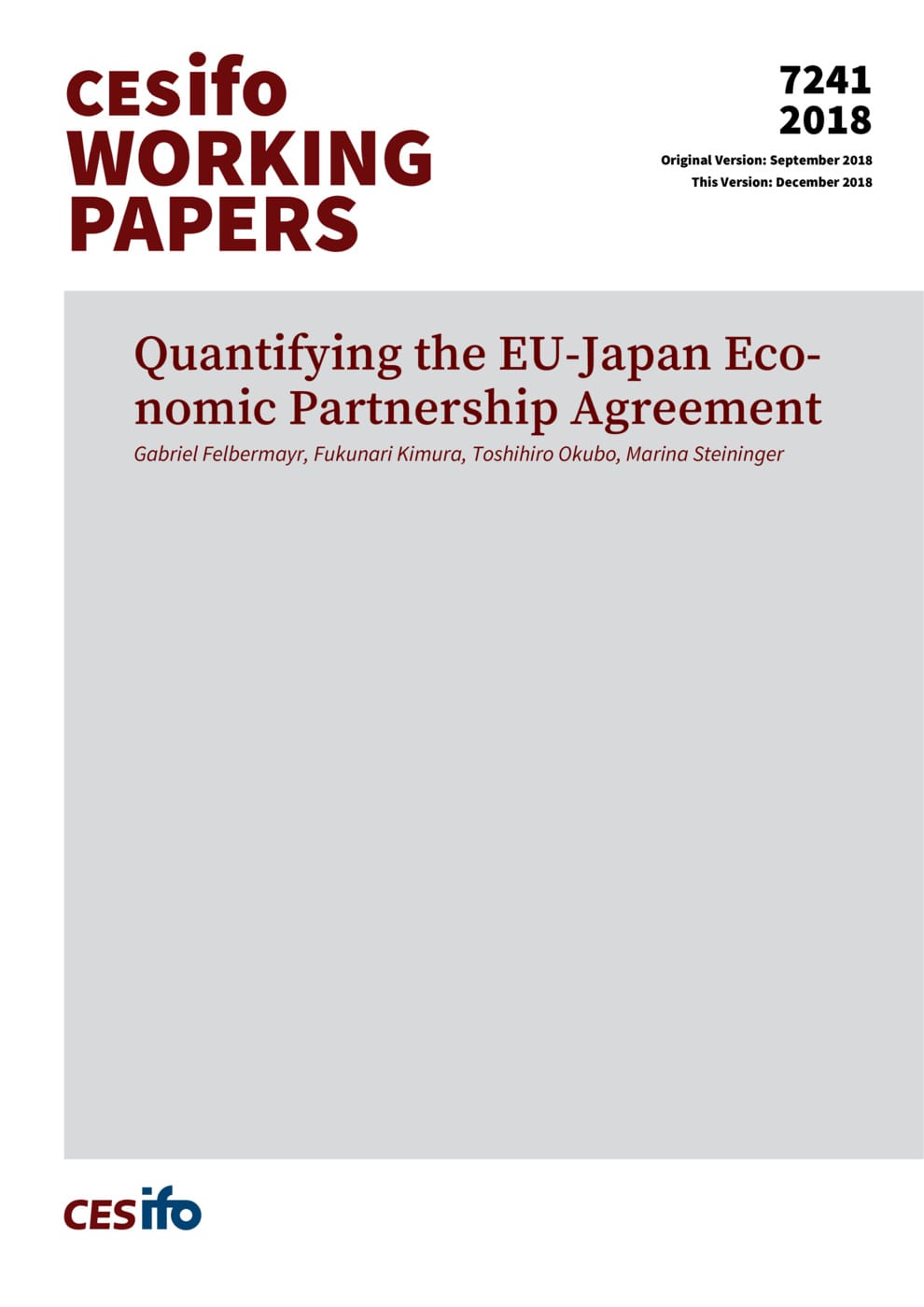Quantifying the EU-Japan Economic Partnership Agreement
CESifo, Munich, 2018
CESifo Working Paper No. 7241

This paper provides a quantitative analysis of the new EU-Japan Economic Partnership Agreement (EPA), the biggest bilateral deal that both the EU and Japan have concluded so far. It employs a generalized variant of the Eaton-Kortum (2002) model, featuring multiple sectors, input-output linkages, services trade, and non-tariff barriers (NTBs). It uses the results of an econometric ex post analysis of a related existing FTA, the one between the EU and Korea, to approximate the expected reductions in the costs of NTBs. This approach yields long-run welfare effects for Japan of about 18 bn USD per year (0.31% of GDP) and of about 15 bn USD (0.10%) for the EU. On average, the agreement does not appear to harm third countries. 14% of the welfare gains inside the EPA stem from tariffs, the remaining 86% from NTB reform, and the services sector account for more than half. In the EU, value added in the agri-food sector goes up most, while in Japan the manufacturing and services sectors gain.
Trade Policy
Empirical and Theoretical Methods